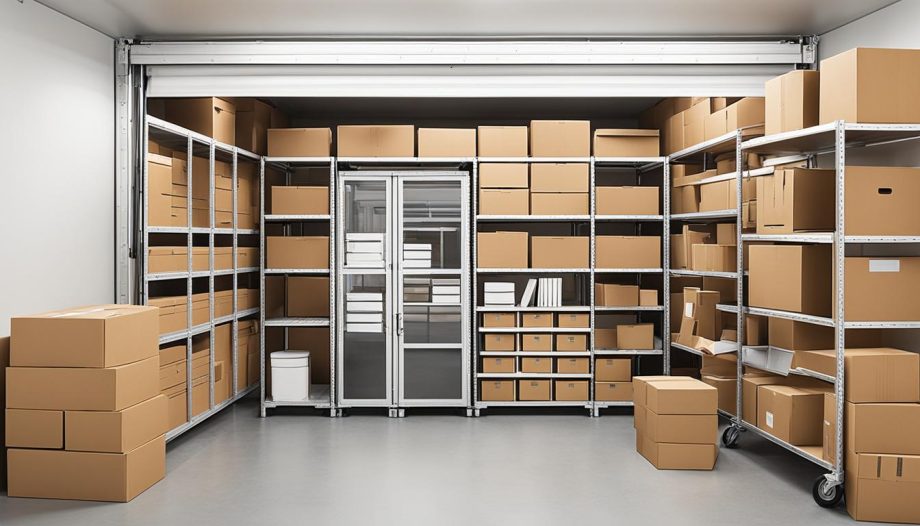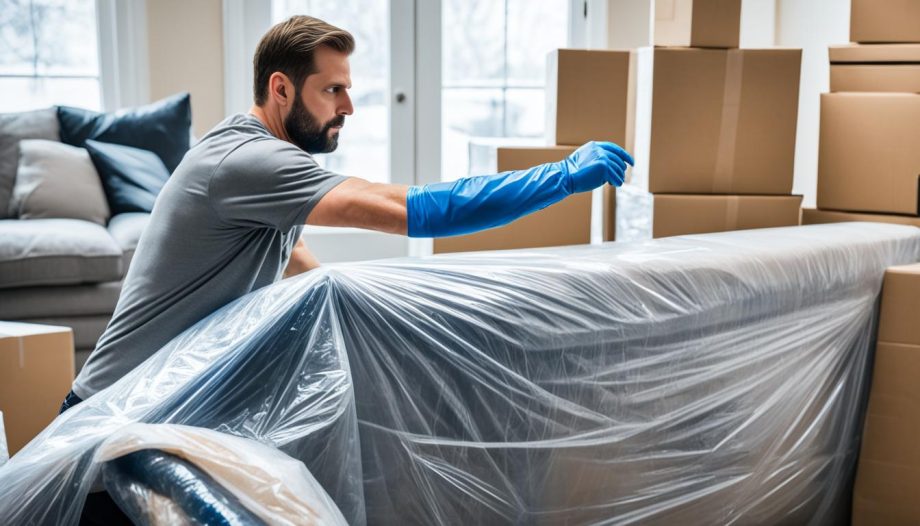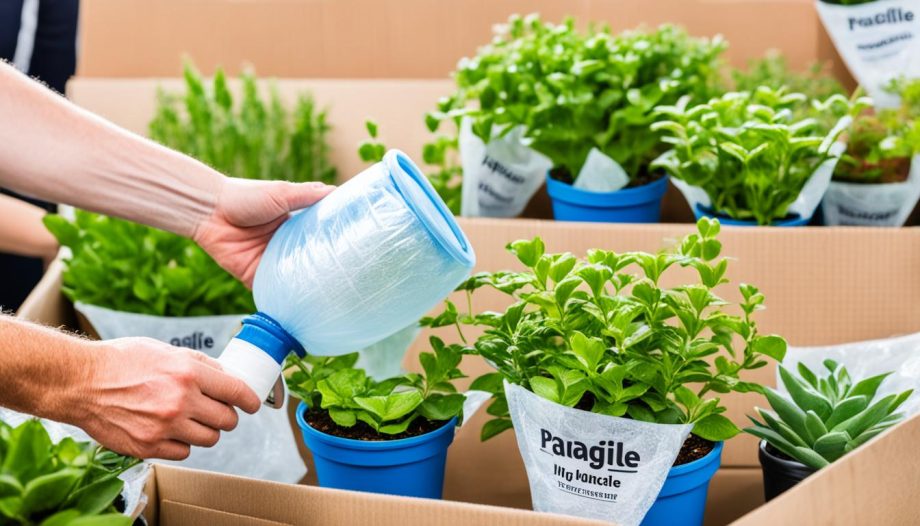In this section, we will provide you with a step-by-step guide on how to efficiently pack a moving truck. By following these techniques, you can ensure a smoother and stress-free moving day.
Moving can be a daunting task, and packing a moving truck effectively is essential to ensure a smooth and efficient relocation. Whether you’re moving to a new apartment or a new city, proper packing techniques can help maximize space, protect your belongings, and make the unloading process easier.
When it comes to packing a moving truck, efficient techniques play a key role in optimizing the use of available space. From organizing your belongings to securing them properly, every step is crucial for a successful move.
In the following sections, we will guide you through each step, providing you with valuable tips and insights to make your packing process hassle-free. So let’s dive in and discover the step-by-step guide to pack a moving truck efficiently.
Organize Your Belongings
Before you start packing for your move, it’s important to take the time to organize your belongings. Categorizing items into different groups will not only make the packing process more efficient but also help ensure that everything is properly accounted for during the move.
Gather Your Supplies
Before you begin organizing your belongings, gather all the necessary packing supplies. These include sturdy boxes, packing tape, bubble wrap, furniture covers, and labels. Having all these supplies on hand will make the organization process much smoother.
Categorize Items
Now that you have your supplies ready, start categorizing your items. Create groups based on the type of item, such as kitchenware, electronics, clothing, or books. This will help you have a clear overview of what you have and make it easier to pack and unpack at your new home.
Pro Tip: Consider using color-coded labels or markers to easily identify which boxes belong to each category. This will save you time when unpacking and setting up your new space.
Declutter and Donate
As you organize your belongings, take this opportunity to declutter and donate items you no longer need or use. Downsizing your possessions before the move will not only lighten your load but also make your new home feel more organized and spacious.
Create an Inventory List
While you organize, make an inventory list of your belongings. This can be as simple as a spreadsheet or a handwritten list. This inventory will be helpful for insurance purposes and keeping track of your items during the move.
Pro Tip: Take pictures or videos of valuable items to document their condition before the move. This will serve as evidence in case of any damages during transportation.
Label Your Boxes
Once you’ve categorized and packed your items into boxes, be sure to label each box clearly. Use the appropriate labels for each category, such as “Kitchenware,” “Electronics,” or “Clothing.” This will make it easier for you and your movers to identify where each box belongs in your new home.
| Packing Supply | Description |
|---|---|
| Sturdy Boxes | Durable boxes of various sizes to pack your belongings. |
| Packing Tape | Strong adhesive tape to seal your boxes securely. |
| Bubble Wrap | Cushioning material to protect fragile items. |
| Furniture Covers | Protective covers to shield furniture from scratches and dust. |
| Labels | Stick-on labels to mark each box with its respective category. |
By taking the time to organize your belongings before packing, you’ll be setting yourself up for a smoother and more organized moving experience. Categorizing your items, decluttering, and creating an inventory list will help you stay on top of your belongings and streamline the unpacking process in your new home.
Load Heavier Items First
When it comes to packing a moving truck, proper weight distribution is key to ensuring a smooth and safe journey. One of the best techniques to achieve this is by loading heavier items first. By doing so, you can establish a solid foundation and maintain stability throughout the move.
Start by identifying the heavier belongings that you intend to transport. These may include furniture pieces such as couches, beds, or appliances like refrigerators or washing machines. Remember to consider the size and weight of each item to determine the most efficient placement.
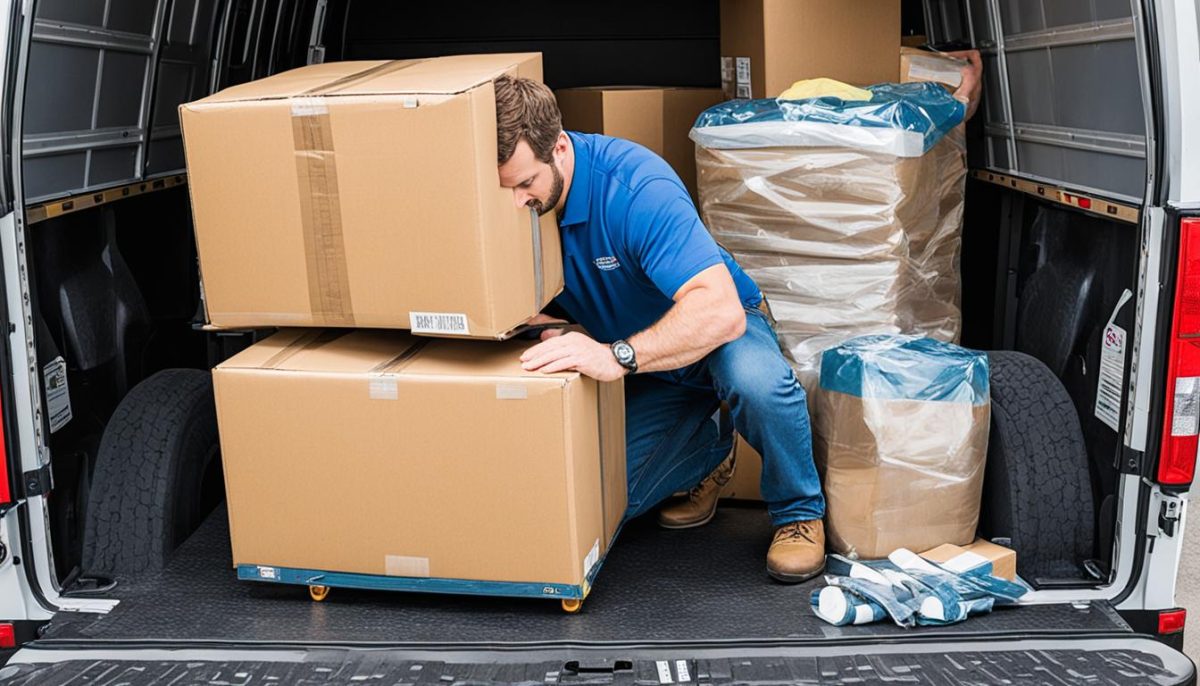
When loading the truck, position the heavier items towards the front, closer to the cab. This strategic placement helps distribute the weight evenly and minimizes the risk of tipping or imbalance during transportation.
By prioritizing the loading of heavier items, you create a solid foundation for the rest of your belongings. As you continue loading the truck, the weight will gradually increase, which can further contribute to a balanced and secure load.
Remember to make use of straps and furniture padding to secure these heavier items in place. Properly securing them prevents shifting during transit and helps safeguard your belongings against potential damage.
Benefits of Loading Heavier Items First:
- Ensures proper weight distribution
- Enhances stability and reduces the risk of tipping
- Creates a solid foundation for the remaining items
- Minimizes the chance of damaging lighter or more fragile belongings
In conclusion, load the heavier items first when packing your moving truck. This technique promotes weight distribution, stability, and overall safety during transit. By carefully considering the placement of these items, you can create a secure foundation and ensure a successful move.
Utilize Vertical Space
Maximizing the available space in a moving truck is essential to ensure an efficient and cost-effective relocation. One effective technique to achieve this is by utilizing the vertical space within the truck. By employing the stacking technique and considering furniture disassembly, you can optimize the loading process and make the most of every inch of the truck’s interior.
To begin, disassemble any bulky furniture that can be easily taken apart, such as beds or tables. This will not only make these items more manageable to transport but also enable you to stack them vertically. By stacking vertically rather than horizontally, you free up valuable floor space that can be utilized for other items.
When stacking items vertically, it is crucial to ensure their stability and safety during transportation. Place heavier items at the bottom to provide a solid base for the stack, and gradually build up with lighter items on top. Be mindful of the weight distribution to maintain balance within the truck.
Additionally, take advantage of any recessed areas or corners within the truck to fit smaller items or boxes. Utilizing these areas efficiently will help maximize space and prevent items from shifting during transit.
By utilizing vertical space through the stacking technique and furniture disassembly, you can optimize the loading process and make the most efficient use of the available space in the moving truck. This not only saves time and money but also minimizes the risk of damage to your belongings during transportation.
Secure Items Properly
When moving your belongings, it is essential to secure them properly to prevent any shifting or damage during transportation. By taking the right precautions, you can ensure that your items arrive at your new location in the same condition they were packed.
One of the key methods to secure your items is by using straps and ratchet tie-downs. These tools are designed to hold larger items in place and prevent them from moving during transit. Make sure to fasten the straps tightly and check them periodically during your journey to ensure they remain secure.
Another way to protect your items is by using moving blankets. These blankets provide an extra layer of cushioning and protection for your furniture and fragile items. Wrap delicate items in moving blankets before placing them inside the moving truck to minimize the risk of damage.
By using both straps and moving blankets, you can effectively secure your items and minimize the chances of any accidents or breakages during transportation.
Benefits of Properly Securing Your Items:
- Prevents items from shifting or falling during transit
- Reduces the risk of damage to fragile items
- Ensures the safe arrival of your belongings
- Minimizes the need for repairs or replacements
Remember, taking the time to securely fasten your items using straps and protect them with moving blankets will give you peace of mind during your move. It’s better to invest a little extra effort in securing your items now than to deal with the consequences of damaged belongings later.
| Secure Items Properly | Benefits |
|---|---|
| Use straps and ratchet tie-downs | Prevents items from shifting or falling during transit |
| Wrap items in moving blankets | Reduces the risk of damage to fragile items |
| Ensures the safe arrival of your belongings | |
| Minimizes the need for repairs or replacements |
Create a Pathway
When packing a moving truck, one of the key strategies to ensure a smooth unloading process is to create a pathway. By doing so, you will have easy access to the items towards the back of the truck, saving you time and effort.
As you load the truck, keep in mind the need for easy access during unloading, especially to essential items. By strategically placing frequently used items or important boxes near the entrance of the truck, you can quickly retrieve them without having to unload the entire truck.
By creating a clear pathway, you can navigate through the loaded items more easily and reduce unloading effort significantly. This organized approach allows for a more efficient and seamless unloading process, ultimately making your move less stressful.
Consider Fragile Items
When it comes to packing, fragile items require extra care and attention. Whether it’s delicate china, precious heirlooms, or sensitive electronics, proper handling will ensure their safe transport. To protect these items from potential damage, follow these essential steps:
- Wrap breakable items in bubble wrap or packing paper: Begin by individually wrapping each fragile item in bubble wrap or packing paper. This extra layer of cushioning will help absorb any impact and prevent breakage during transportation.
- Label them as fragile: Clearly mark each package with a prominent “fragile” label. This will alert everyone handling your belongings to exercise caution. Place the label on multiple sides of the box to enhance visibility and minimize the risk of mishandling.
- Place fragile items towards the top of the load: Avoid the risk of heavy objects crushing and damaging fragile items by placing them towards the top of the load. This positioning ensures that they are safely nestled and protected from any potential pressure or impact.
Remember, taking the time to properly pack and label your fragile items will give you peace of mind and ensure they arrive at your new destination in one piece.
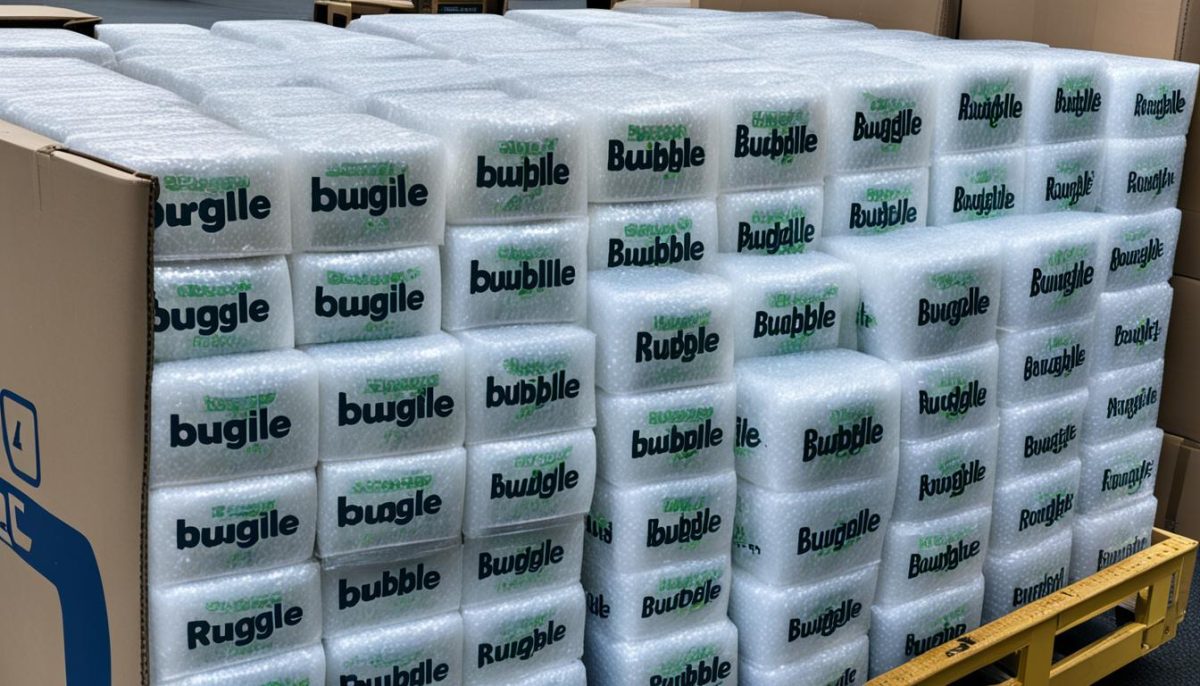
Tips for Choosing the Right Bubble Wrap
Choosing the correct bubble wrap is crucial for safeguarding your fragile items. Here are some tips to assist you:
- Opt for bubble wrap with smaller bubbles (approximately one centimeter in diameter). Smaller bubbles provide better cushioning and protection.
- Consider the thickness of the bubble wrap. Thicker wrap offers increased protection against impact and pressure.
- Ensure the bubble wrap is clean and free of any adhesives or sticky residues, as these could adhere to and damage delicate surfaces.
- Estimate the amount of bubble wrap you’ll need based on the number and size of your fragile items. It’s better to have a surplus than to risk running out during the packing process.
| Pros of Bubble Wrap | Cons of Bubble Wrap |
|---|---|
|
|
Fill Any Gaps
When packing a moving truck, one important step to prevent shifting and ensure the safety of your belongings is to fill any gaps between items. By using the right packing materials, such as blankets or pillows, you can create a secure and stable load.
Gaps between items can lead to movement during transit, increasing the risk of damage to your items. These gaps can occur when items are not packed tightly together, leaving empty spaces that allow for shifting.
To fill these gaps, place packing materials strategically between items. Blankets or moving pads can be used to cushion and separate fragile items, preventing them from rubbing against each other. Pillows can also be used to create a barrier between larger items or to fill in smaller spaces.
By filling the gaps, you create a more compact and secure load, reducing the chances of items shifting and getting damaged during transportation. This step is especially important when loading delicate or valuable items that require extra care.
Benefits of Filling Gaps:
- Prevents shifting and movement of items
- Reduces the risk of damage during transit
- Ensures the safety of fragile or delicate items
- Optimizes space and creates a more efficient load
Remember, filling gaps with packing materials is an essential step in the packing process to protect your belongings and ensure a smooth and successful move.
Final Check and Lock
Before you hit the road, it’s essential to conduct a final check to ensure that everything is securely loaded in your moving truck. This step is crucial for a safe and hassle-free journey to your new home.
Double-check that all items are properly tied down and secured with straps and ratchet tie-downs. This will prevent any shifting or damage during transit. Take a few extra minutes to inspect the placement of furniture and boxes to ensure they are stable and won’t move around.
Once you’ve completed the final check of your loaded truck, don’t forget to lock all doors securely. This will protect your belongings from theft or accidental opening during transportation. As an additional safety measure, store the key in a safe and easily accessible place, such as your pocket or a designated key holder.
By performing this final check and locking your moving truck, you can have peace of mind knowing that your items are safely secured for the journey ahead. Take the necessary precautions to ensure key safety and enjoy a stress-free move to your new home.

